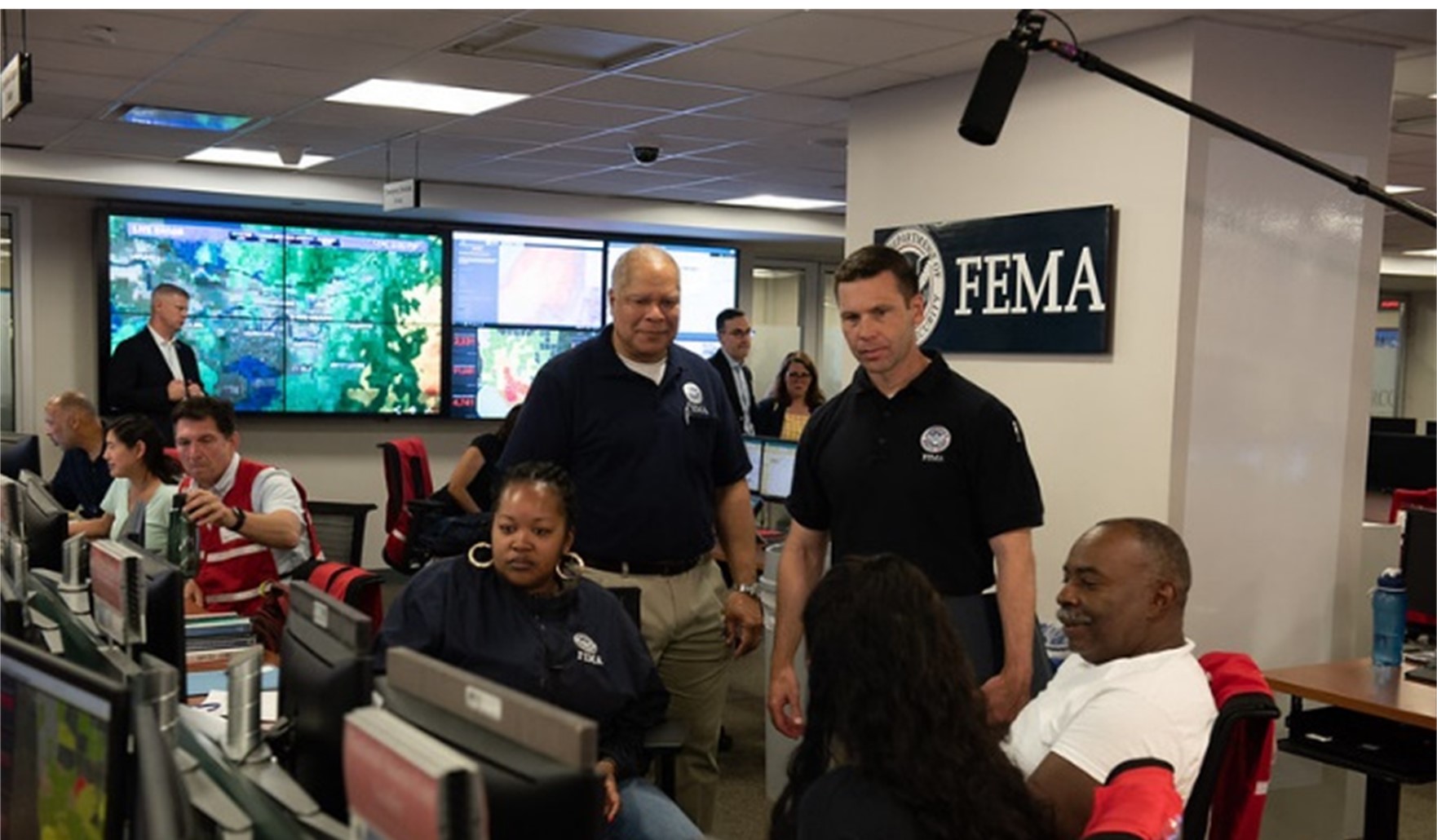The need for mutual support between regional and SLTT partner agencies is likely during a large-scale biological incident. In some instances, a federal Unified Command (UC) may be established to maintain situational awareness; keep track of the ever-changing status of human, critical services, resources, supply chain, and infrastructure impacts; support SLTT resource requests, and communicate with SLTT partners throughout response and recovery.
Biological incidents that have large human health impacts will entail, at a minimum, communications between partner agencies such as HHS ASPR, FEMA, and HHS CDC. A variety of other agencies will be brought in as required by the situation and to provide additional expertise and representation as the UC expands. As an example, DOS will engage with international stakeholders and in the early stages of an overseas incident caused by a novel emerging disease reported under International Health Regulations (IHR), while terrorist incidents will involve the DOJ FBI and the Attorney General will lead law enforcement investigation activities when the incident is, or is suspected to be, intentional in nature. FEMA will help coordinate information and resource requests among federal partners, as necessary.
2.4.1 Federal Response Partners That Communicate with the Public
When an incident is complex enough to require a coordinated, interagency communications effort, the federal Emergency Support Function (ESF) #15 will be activated to provide additional coordination mechanisms and resources for the whole responding community, including individuals, community organizations, NGOs, the private sector, and FSLTT governments. When ESF #15 is activated at the federal level, EA efforts are coordinated by the Lead Federal Agency (LFA) and a JIC may be activated to serve as the federal incident communications coordination center.
2.4.2 Emergency Support Function (ESF) #15 - National Response Framework External Affairs Annex
At the national level, ESF #15 and the External Affairs Annex to the NRF integrates the Public Affairs, Congressional Affairs, and Intergovernmental Affairs components of federal departments and agencies. ESF #15 coordinates the development and release of accurate, timely, and accessible federal information and instructions to affected audiences, including the government, media, NGOs, the private sector, and, in coordination with SLTT entities, to the local populace (including children, those with disabilities, vulnerable populations, and individuals with limited English proficiency). Under SLTT-level ESF #15 annex to emergency response plans, SLTT authorities retain primary responsibility for communicating health and safety instructions for their population, although the federal government may assist (for example, HHS and CDC provide a variety of incident-specific information via agency websites and have communication centers that can coordinate the multi-jurisdictional release of public health and medical information). Specific supplemental guidance for HHS, its agencies, and partners to educate and inform the public, healthcare professionals, policy makers, partner organizations, and the media is located in the Public Health and Medical Annex (ESF #8) to the NRF. This also includes content related to:
- Federal assistance to the incident-affected area
- Federal departmental/agency response
- National preparedness activities
- Protective measures (both MCMs and NPIs)
- Impacts on affected and non-affected areas ― health and medical impacts, both real and perceived

Activation of National Incident Communications Conference Line (NICCL) may occur along with ESF #15 activation; these calls involve regular updates from key external affairs leadership across the federal government.
2.4.2.1 External Affairs Coordination - Activation of a Joint Information Center
The LFA will use its existing and pre-approved EA structure that coordinates with the White House, federal and SLTT agencies, the private sector, and other entities to provide credible messaging and accurate information to affected populations using all available technologies and tools through their PIO and EA offices. The UCG and/or LFA may elect to establish a JIC (or National JIC, depending on the incident) for biological incidents, including food and agriculture incidents. The JIC performs the following:
- Ensures all potential stakeholders for incident response and recovery efforts are provided the necessary information for release
- Deconflicts all information prior to release and provides a unified public message regarding the status of the incident response and recovery as well as any public, animal, plant, or environmental health impacts that may arise from the incident
- If applicable, interacts with an established Incident Command (IC) or UCG to ensure that all messaging coincides with the ongoing response and recovery operations
- Acts to minimize delays to the release of approved messaging
- Ensures equal access to the information distributed to the public, including the provision of information in alternate formats for persons with disabilities, children, and the elderly, and, as needed, in languages other than English
2.4.3 Public Information Federal Spokesperson
Depending on the nature of the biological incident, HHS ASPR may designate one of the HHS agencies (e.g., HHS CDC and FDA, NIH) to lead public health and medical response public affairs activities;43 alternatively, the appropriate spokesperson may be from DHS, the White House, the National Security Council (NSC), or elsewhere. In the instance of a terrorist incident, the DOJ FBI must be consulted before sensitive media/press releases are issued. Federal response-related announcements to the public typically are coordinated through the JIC. In some cases, federal government officials, in concert with SLTT officials, may need to communicate with the media/public on tactical operations and matters affecting public health and safety directly from the scene, particularly during the early stages of the emergency response in the context of a localized incident.

Figure 19: A FEMA spokesperson communicating a message
What do you need to know?
- What federal support is available for communicating with the public? When would this be available to support response or recovery?
- How will your communication plan for biological incidents expand to include federal stakeholders? How will operations return once federal partners are no longer engaged for communication assistance?
- What information will federal partners request to ensure informed decision-making and communication?


